Please note: The Sun exhibition ended on 4 November 2020. To find out what exhibitions and activities are open today, visit our What’s On section.

Science Museum Group © The Board of Trustees of the Science Museum
The Sun gives us light, heat and is responsible for all life here on Earth. It’s no surprise, then, that it has fascinated humans for as long as there have been humans. What is this strange ball of light that governs our lives so completely? How do we make sense of this shiny orb that tells us when to sleep, when to wake, and even how to dress?
The Sun is very, very far away (I’ll tell you just how far later), which makes it hard to properly understand. To remedy this, throughout history, people have made models of the Sun, planets and stars in order to shrink it all down and shed some light on their secrets. Our exhibition opens with a few of these models. Here, I’ll show you how these models have changed as humanity’s understanding of the Sun and of our whole solar system has developed.
Trundhom Sun Horse, C.1400BCE

Science Museum Group © The Board of Trustees of the Science Museum
This is a replica of a 3,500-year-old model of the Sun being pulled by a horse. It was a Bronze Age Norse belief that a horse called Skinfaxi pulled the sun across the sky during the day. The sun is symbolised by the big gold disk on the back of the chariot. At night, another horse, Hrímfaxi, supposedly turned the chariot around, and walked back across the sky to the east. Because the sun was believed to be flat, this return journey would show the dark side of the Sun and so was invisible against the night sky.
The idea that the sun moves across the sky with the help of everyday objects and creatures is present in many cultures, and we have a video in the exhibition that shows some of these examples, including chariots, boats, and teams of horses representing all the colours of the rainbow.
It makes sense that people explained the Sun’s movements in terms of familiar things. It’s important to recognise that these people were observing the world around them, just as scientists do today, but that they were limited in what they could learn from watching the Sun without telescopes and satellites. Our current knowledge and understanding is the product of humanity’s collective observations of the universe. That is why these objects are still an important (and fascinating) part of our evolving understanding of the Sun.
Earth-centred armillary sphere, c. 1500
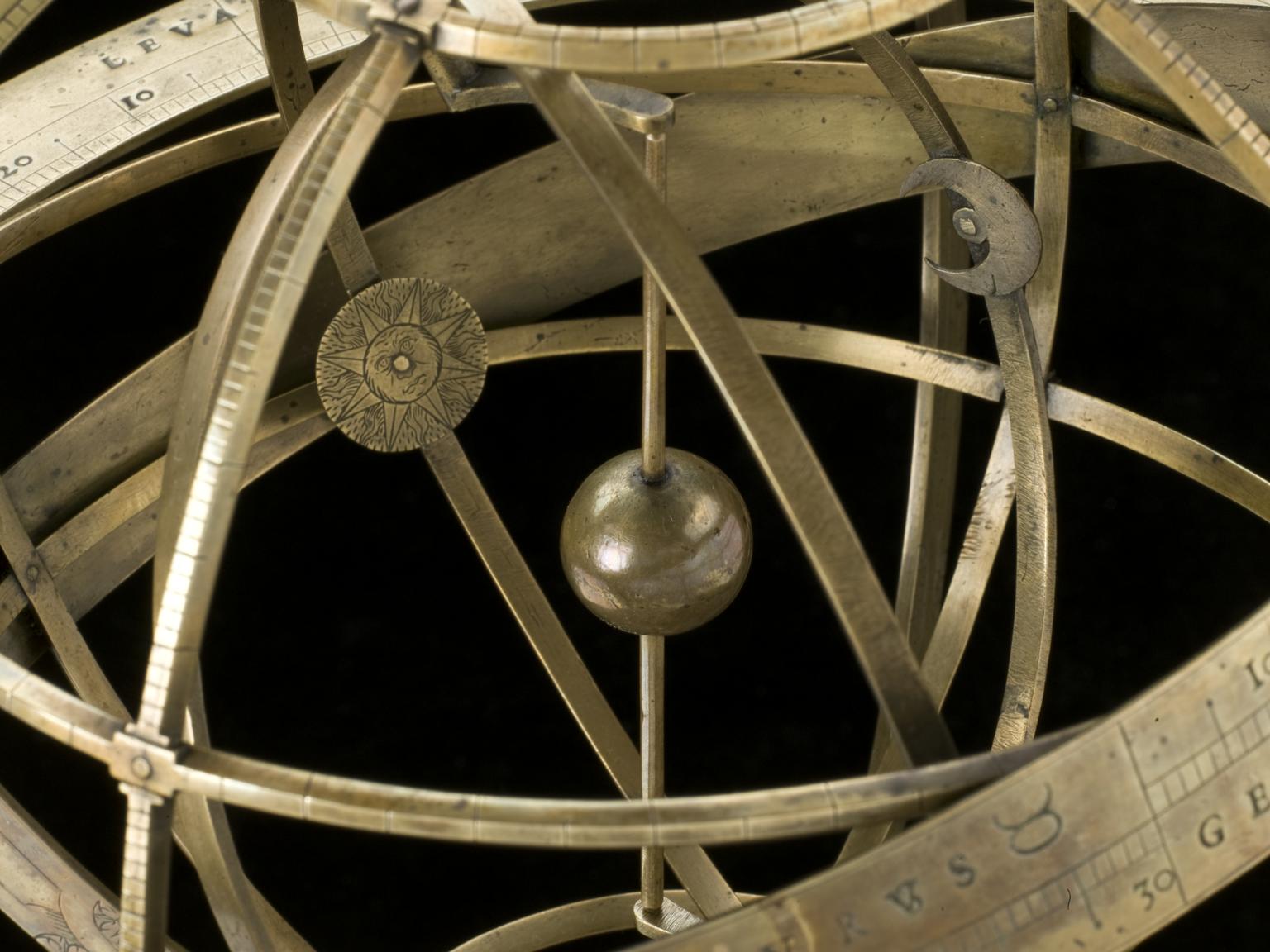
Science Museum Group © The Board of Trustees of the Science Museum
For much of human history it was believed that the sun revolved around the Earth. It’s easy to see why; the Sun, Moon, and stars appear to orbit the Earth once per day, and we can’t feel the Earth moving, so it is understandable (perhaps even sensible) that people concluded that the Earth stays still at the centre of everything while the universe revolves around it.
This was the dominant theory from around 400BCE until the mid-1500s. It was only then that Copernicus published his model of the solar system with the sun at the centre. This challenged the notion that the Earth and therefore humans were at the centre of all creation. It caused much outrage at the time and even after the publication of this book, the Earth-centric view was held by many. It was slow going to prove the Sun was at the centre of our solar system. It was only finally proved that the Earth revolved around the sun and not the other way around, thanks to advances in telescopes and the development of theories of gravity.
These armillary spheres continued to be popular long after the representation they were showing was proven untrue, partly due to how helpful they were in teaching about the movements of the Sun, Moon and stars from an Earth-based perspective. Many portraits of wealthy people during the 15th and 16th centuries included an armillary sphere in the background to show off how wise and learned they were.
Orrery with the Earth moving around the Sun, c. 1851
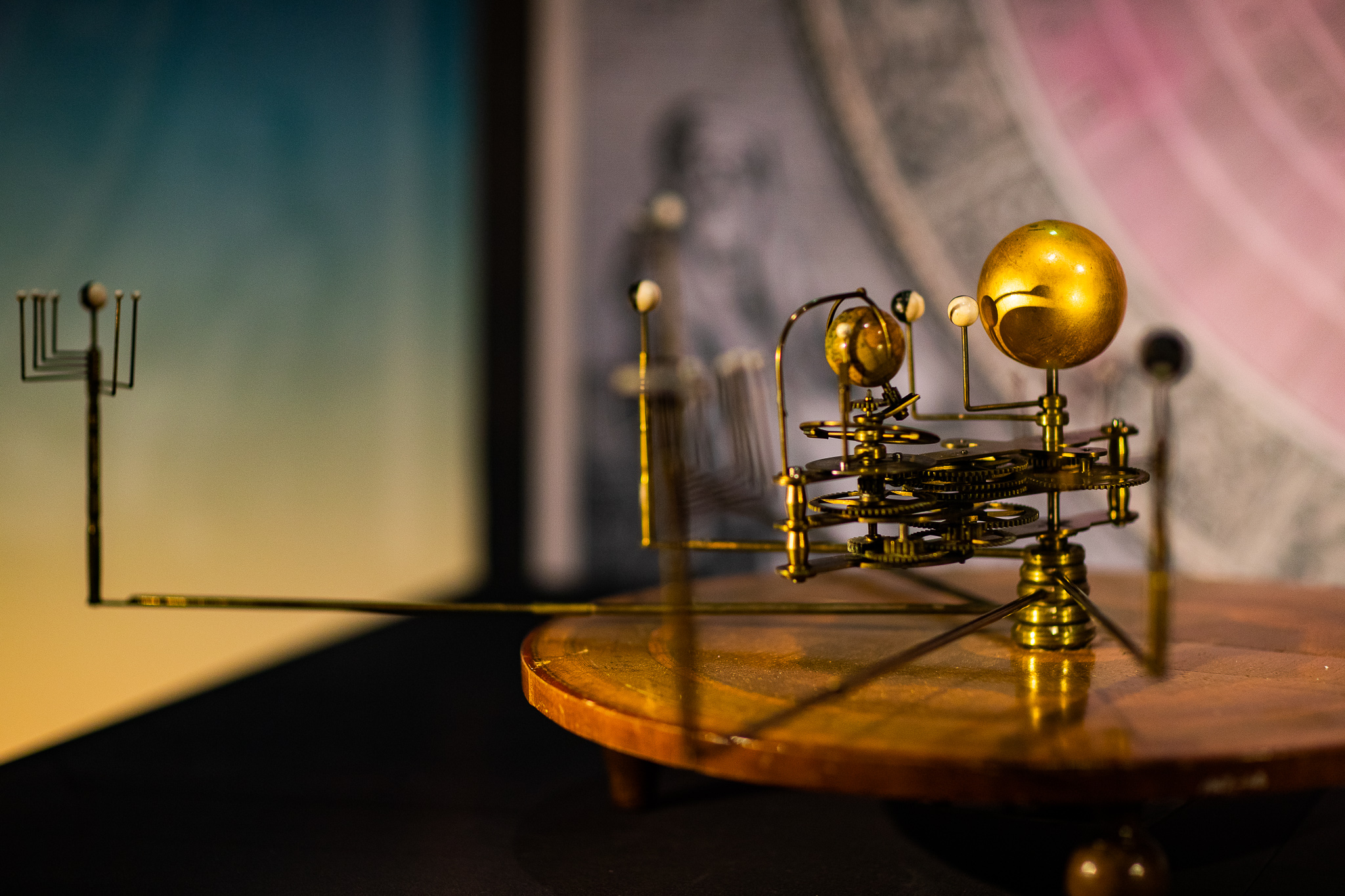
Science Museum Group © The Board of Trustees of the Science Museum
This model of the solar system might look a bit more familiar to us, with the Sun in the middle, surrounded by the planets and their moons. This type of model is called an orrery, and it’s mechanical. Unlike the armillary sphere, which required someone to manually move each ring, this model can show you the whole solar system in motion. They became popular in the early 1700s when one was given to Charles Boyle, the fourth Earl of Orrery in Ireland, and that’s also how they got their name (you can see one owned by Boyle in the collections here).
One interesting thing to note about this orrery is that there is no Pluto. Pluto was declassified as a planet in 2006, so it would make sense to not include it in a modern orrery. However, this model is dated to 1851, so why is everyone’s favourite dwarf planet absent? Pluto wasn’t discovered until 1930, almost 80 years after this orrery was made. Sadly, since Pluto takes about 248 Earth years to revolve around the Sun, it didn’t even complete one full orbit between being discovered and being declassified. Poor Pluto.
Raingo Frères Orrey Clock, c. 1830
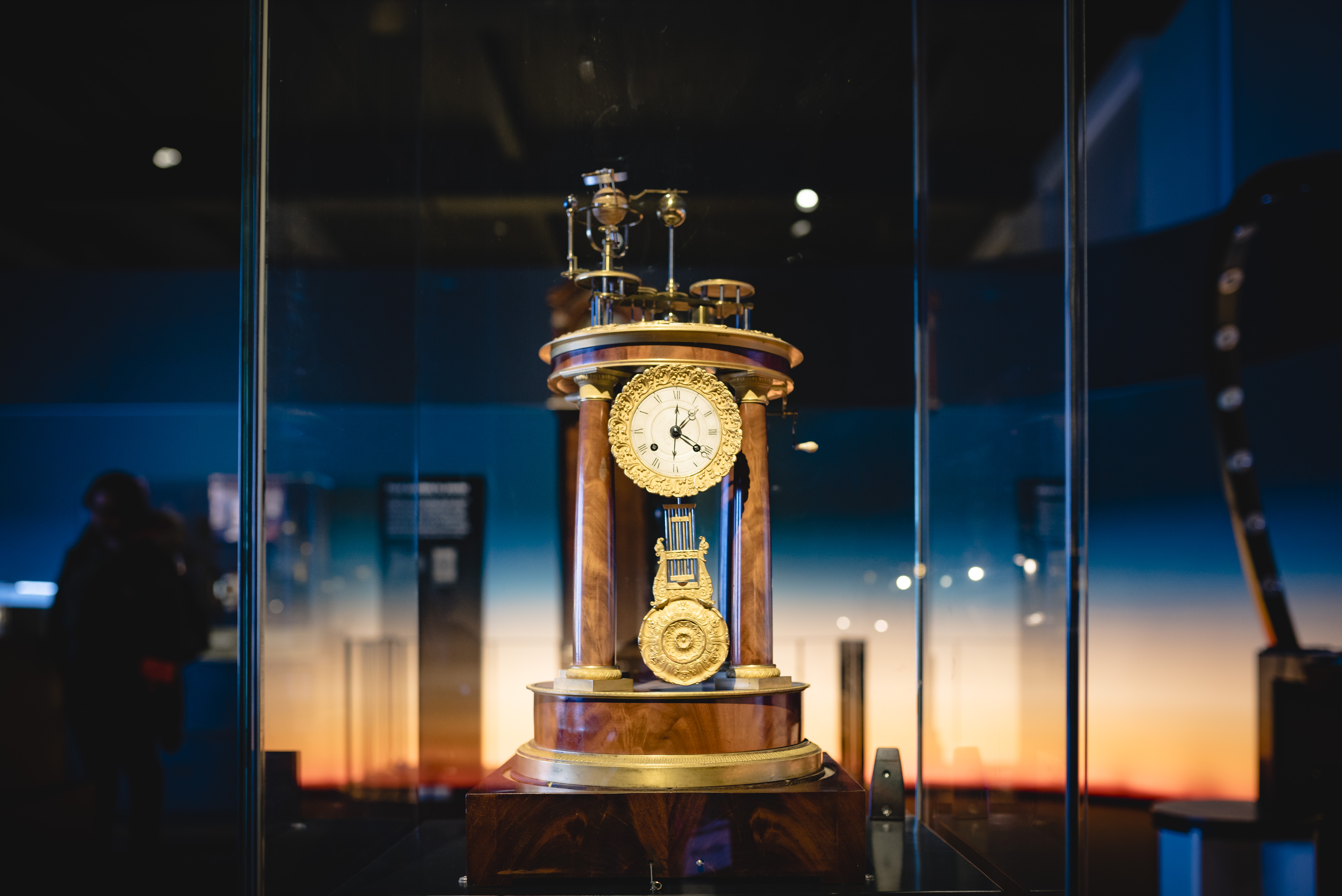
Science Museum Group © The Board of Trustees of the Science Museum
This is one of my favourite objects in the exhibition. It is an orrery of the Sun, Moon and Earth, mounted on top of a clock. As the clock ticks through its 24 hours, the objects on the top move through a real-time day/night cycle. It even goes through the seasons and the astrological calendar represented by the star signs around the top.
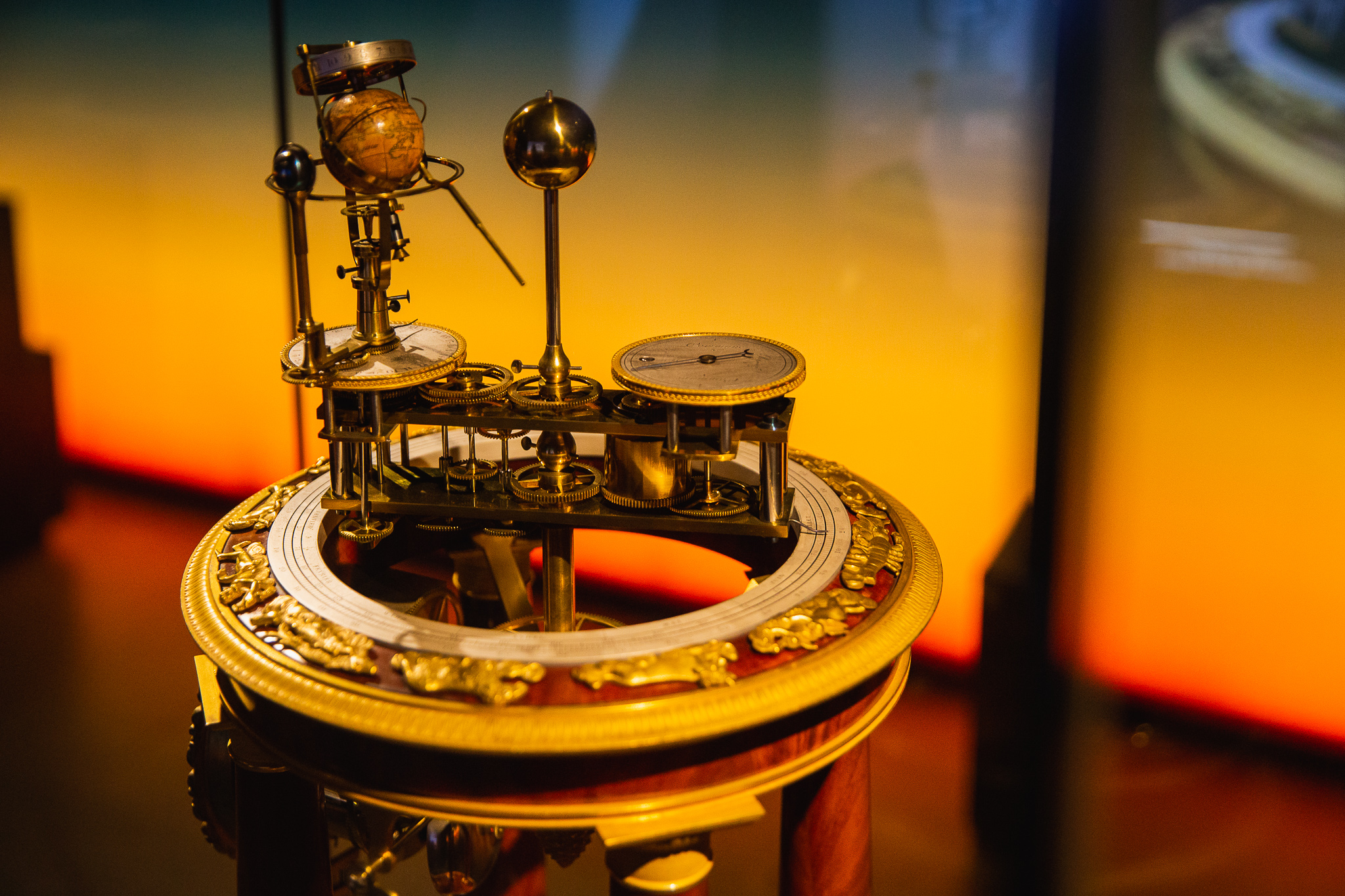
Science Museum Group © The Board of Trustees of the Science Museum
Unfortunately, the clock doesn’t move in the exhibition, but there is a video next to it showing a sped-up version of its 24-hour cycle. It’s also been set to where the Sun and Earth were aligned in July, when the exhibition opened here in Manchester.
What makes this a special object for me is the combination of solar time and mechanical time. For much of human history time was linked directly to the movements of the Sun. When it rises, you get up, and when it sets, you sleep. The invention of sundials meant you could get a more accurate idea of the exact time in the day, but that still relied on the Sun—and if it was raining, then you’d have no idea!
When analogue time was adopted the day was split into seconds, minutes and hours. Suddenly people didn’t need the Sun to tell the time, they only needed a clock. Nowadays, few of us will look outside to see what time it is; we’ll check our phones, or computers or other clocks. Our time is now largely independent of the Sun, when for most of human history it was completely reliant on it. So, this object, which shows the relationship between mechanical time and solar time, is really special, and required incredible knowledge of the motions of the Sun and Earth across a year to make it run perfectly.
AND NOW?
There isn’t a modern-day example of a solar system model in the exhibition. This is because most current models are computer-based to more accurately show the movement of the Sun and the solar system around it. Another reason is because if we did try to make a fully accurate scale model of the solar system then we’d have quite a challenge. Thanks to satellites, high powered telescopes, and the knowledge of astronomers and scientists, we now know that the Sun is about 109 times bigger than the Earth and is about 93 million miles away. Even if we ‘shrink’ it down, we would still struggle to make a sensible scale model. If the Earth was the size of a pea the Sun would have to be the size of a wrecking ball and be 11.5 metres away – that’s more than two giraffes in length! If we kept up this scale all the way to Pluto then our solar system would be 450m long, which is about the same as 18 blue whales lying nose to tail. Pluto itself would be too small to see without a magnifying glass. That’s why even modern solar system models aren’t as accurate as they could be.
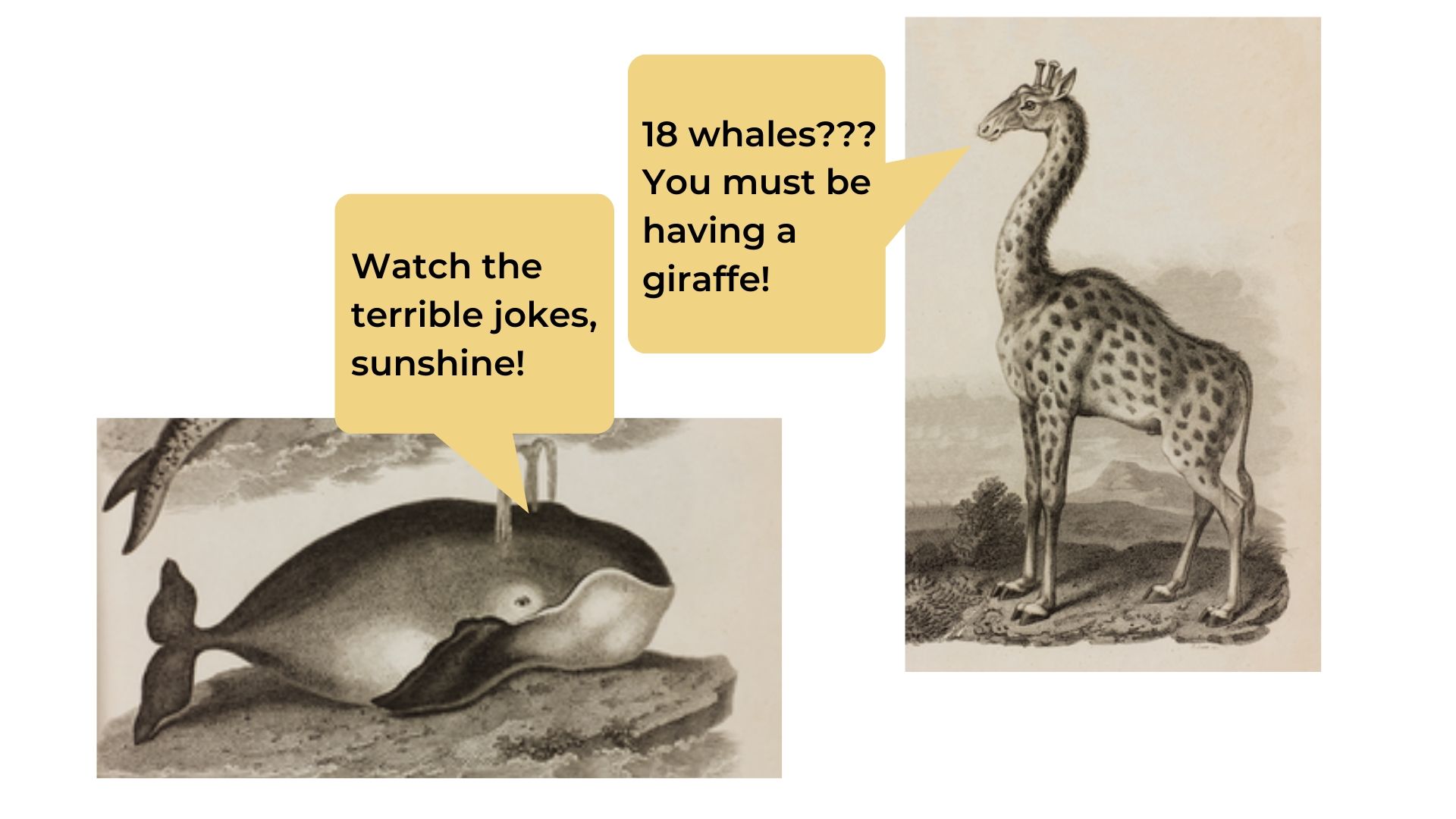
The models of the Sun in our exhibition show how our understanding of our star has developed over time but the exhibition also shows how much there is still to learn. These are just a few of the objects we use to show humanity’s journey of understanding, and if you haven’t been to see the exhibition yet you should definitely should—it really is the only place you’re guaranteed to see the Sun in Manchester!